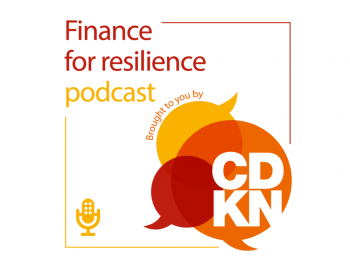Working Paper : Financing Nationally Appropriate Mitigation Actions: Insights from CDKN’s experience
Working Paper : Financing Nationally Appropriate Mitigation Actions: Insights from CDKN’s experience
The concept of Nationally Appropriate Mitigation Actions (NAMAs) was introduced in 2007 under the United Nations Framework Convention on Climate Change as a mechanism for enabling mitigation action in developing countries, with financial and technical backing from industrialised nations. Since then, the concept has evolved to more complex levels of ambition, and NAMAs have proliferated with participation from developing countries across the world.
Currently, there are some 178 NAMAs in the preparatory or implementation stages, and recorded numbers have been steadily rising on databases that track NAMA activity worldwide. At the same time, it has become evident that the current demand for NAMA financing outstrips supply, as most of the existing pipeline of proposals is pending donor support for implementation.
Financial support is a key enabler of the NAMA mechanism, and while the shortage of ‘dedicated’ funding sources for NAMA implementation is partly responsible for the financing gap, certain barriers to the mobilisation of NAMA funding are also evident on the part of host countries. Drawing on CDKN’s experience with NAMA assistance in selected countries, coupled with experts’ accounts and globally documented learning on the subject, we observe the
following issues that limit the financing potential of NAMAs in practice:
- NAMAs have often had a narrow funding focus, reducing their potential to function as a more general investment prospectus.
- Developing countries and partners require enhanced assistance to plan the financial mechanisms in NAMAs and improve the bankability of projects.
- NAMAs find it difficult to align with the procedures and investment logic of multilateral development banks, and have therefore missed out on this significant financing opportunity.
- NAMAs need to demonstrate sufficient political backing and, coordination at national levels to attract international investment; arranging this in the complex political and economic settings of developing countries can be difficult.
- Mobilising private investment is a key goal of NAMAs and, as such, private sector support and participation are necessary; however, reconciling private sector engagement with government facilitation processes can often be challenging for NAMA developers.
Moving forward, NAMAs need to diversify their sources of financing and connect with the greater opportunities that are surfacing on the climate finance landscape, particularly the Green Climate Fund (GCF). The GCF, for its part, can benefit from linking with the engagements and institutional capacities established by NAMAs, building on the political capital invested by countries. Integration should, therefore, be a priority for both sides. However, the extent to which this can be enabled remains to be seen, as there is currently a lack of clarity on GCF pipelines in host countries.
Donors and international technical support providers can play a key role in bridging the gap between NAMAs and GCF planning at the country level, as these entities are a common factor in both streams of work, and this makes them good entry points for enabling the ambition of integration.



